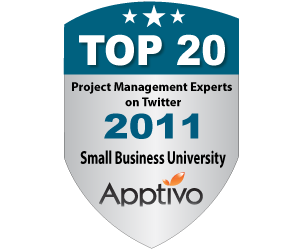We’ve published a lot of inspiring and thought-provoking
posts this year about project management, business analysis, leadership and
more, so we wanted to take a moment to look back on the most popular posts of
2014. Here are the topics our readers enjoyed the most this year:
Leadership
Lessons: Paul R. Williams: Paul R. Williams, Leader of Project
Management, PAi, talked to us about how PMOs add value to the organization.
Today, PMOs are a strategic imperative for the C-Suite to deliver projects
aligned with key strategic initiatives. Project Managers are in high demand
today; Williams will give us keen insight into recruiting, training and
retaining key program staff. To read the
full post, click
here.
Here
Comes The Boom! An NFL Champion Illustrates Key Business Analysis Skills:
As business analysis practitioners, we certainly appreciate the analytical
style of Richard Sherman and his LOB brothers. In addition to
conducting a sort of pre-game analysis, we too must be able to conduct
game-time analysis and make adjustments, where needed. For example,
it is important for practitioners to understand stakeholders early on. Whether
by talking to the actual stakeholder, consulting with other practitioners who
have worked with them, or some other method, we need to understand certain
things about our stakeholders, including (but not limited to) the
stakeholder's view of the problem or opportunity at hand, expectations
of a solution, and anticipated level of involvement with the
initiative. To read the full post, click
here.
Leadership
Lessons to Live By: In virtually every industry that exists today,
leaders must set aside more time to reflect and assess their thinking,
capabilities, and strategies. It is crucial that they evaluate how their
leadership brand is being perceived by others and whether or not it requires a
tune-up. We highlighted some key leadership lessons that you should live
by. To read the full post, click
here.
The
5 Best Free Project Management Tools: There are effective free project
management tools out there - some are more robust than others, but all of them
provide ways to collaborate and complete projects quicker. We found five of the
best free project management tools that may make your job easier. To read the full post, click
here.
Big
Data and Project Management: Today, organizations are taking strategic
risks to add business value through innovative big data initiatives. Big data
is a blanket term for any collection of data sets so large and complex that it
becomes difficult to process using available data management tools
or conventional data processing applications. Tom Davenport, author of
“Big Data at Work” has worked with many companies and he’s uncovered key
principles around five key areas to be successful at big data projects. To read the full post, click
here.
Agile
State of Mind: Are you wondering how to choose which project management
method to deliver a successful project? Organizations today have to be more
competitive in the marketplace so choosing the best practices and methods for
your organization and projects is important. Agile is a set of values and
principles, not a pre-defined process with obvious areas of limitation.
Waterfall is a model based on development method that is linear and sequential.
We put together the top four criteria to choose the best fit of methodologies
at the right time for the right customer. To read the full post, click here.
Women
in Leadership: Jo Miller: Jo Miller, CEO Women’s Leadership Coaching
Inc. sat down with us to talk about women in leadership. Today, women make up
over 50 percent of the workforce, are entrepreneurs, hold key leadership
positions and serve on board of directors. Miller will give us her insight into
the challenges women face in the workplace, how to overcome these obstacles and
become a more empowered leader. To read
the full post, click
here.
Leadership
Lessons: Dr. Alicia Aitken: Dr.
Alicia Aitken, managing director Asia Pacific, Human Systems International
(HSI), sat with us to talk about the ins and outs of leadership in today’s
competitive business landscape. According to Aitken, being authentic makes
great leader stand out in a crows these days. Today’s world is full of
leadership models, business school taught methods and processes. Leaders stand
out by being authentic and true to who they are and who they are leading. To read the full post, click
here.





















